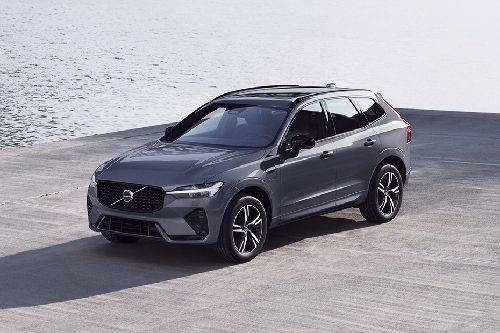Volvo Unveils World-First Multi-Adaptive Safety Belt for Future EX60 SUV

Saudi Arabia : Volvo’s next breakthrough in safety tech is to adapt in real-time to better protect every person inside. It will debut in the 2026 electric EX60 SUV.
KEY TAKEAWAYS
What is the significance of expanding load-limiting profiles?
The expansion from three to eleven profiles allows for finer control and better suitability to each situation, reducing the risk of injuries.What is the basis of Volvo's safety research?
The innovation is based on over 50 years of real-world crash research, analyzing data from over 80,000 real-life crash cases.- The new safety belt adapts to body shape and crash severity using sensor data.
- It expands belt load-limiting profiles from three to eleven.
Volvo Cars has introduced a world-first in car safety with its new multi-adaptive safety belt. The belt is set to launch in the fully electric Volvo EX60 in 2026.
This new system, which is designed to improve protection for all passengers using real-time data, is a major step forward from the classic three-point belt, which Volvo first introduced in 1959.
The new belt will go far beyond what today’s seat belts can do by responding to live conditions and the unique body of each passenger.
It uses detailed information from inside and outside the vehicle to fine-tune belt performance. From there, it'll help lower the risk of major and minor injuries during accidents.
Smarter Belt with Custom Fit
Volvo’s new safety belt uses interior, exterior and crash sensors to tailor its function in real time. This means the system can change how the belt reacts depending on the type of crash, the size of seating position of the passenger, and how fast the collision happens.
 Photo from Volvo
Photo from VolvoFor example, a heavier passenger in a high-speed crash may get a stronger belt force to protect the head. At the same time, a smaller person in a light crash may receive a softer force to help avoid rib injuries.
The real innovation is in the expansion of load-limiting profiles from just three to eleven. These profiles control how much pressure the belt applies during impact. The more options available, the better the belt can suit each situation.
Main Features of the New Belt System
- It uses real-time data from multiple sensors to analyse details of a crash.
- It adjusts the load of the belt based on height, weight, posture and crash force.
- It expands force profiles from three to eleven for finer control.
- It works together with other safety systems like airbags and driver aids.
- It receives over-the-air updates to improve over time.
Built on Decades of Safety Research
This innovation is from more than 50 years of real-world crash research by Volvo. The company has gathered data from over 80,000 real-life crash cases to help its engineers understand how different people respond in different crash scenarios.
 Photo from Volvo
Photo from VolvoThis large database is what the Volvo Cars Safety Standard is all about, which is beyond standard test rules and focuses on actual road conditions.
Volvo wants to make all its safety systems smarter and more connected, which is what the new belt is part of. It joins a full ecosystem that includes airbags, occupant sensors and crash detection tools.
Tested at the Volvo Safety Centre
The new belt has been fully tested at the Volvo Cars Safety Centre, a crash lab that marks 25 years in operation. In this lab, engineers can recreate almost any traffic accident and test how systems react under extreme, real-world conditions. Here, they've refined the belt to perform at its best.
Åsa Haglund, head of Volvo Cars Safety Centre, said: “The world's first multi-adaptive safety belt is another milestone for the safety of automobiles. It is also a great example of how we leverage real-time data with the ambition to help save millions of more lives.”
Volvo Car Models
Automotive News and Reviews
- Latest
- Popular
You might also be interested in
- News
- Featured Stories
Featured Car
- Latest
- Upcoming
- Popular



























